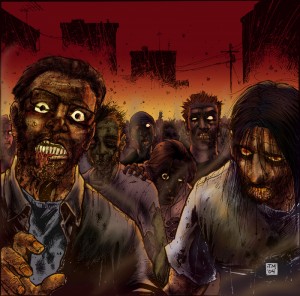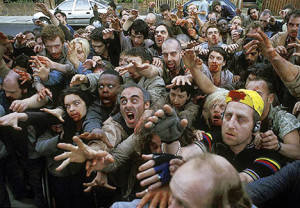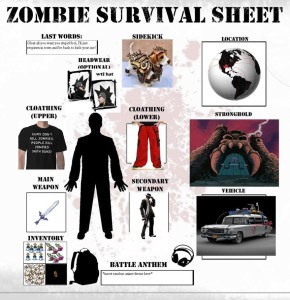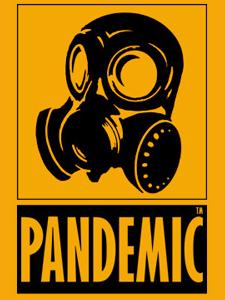Tag Archives: Megastore
‘Zombie’ attacks continue? Man naked, bites off chunk of man’s arm
 PALMETTO, Fla. – The latest in a string of “zombie” like attacks happened in a Manatee County home Wednesday night after a man under the influence went into a fit of rage and bit a piece of someone’s arm off during a visit with his children.
PALMETTO, Fla. – The latest in a string of “zombie” like attacks happened in a Manatee County home Wednesday night after a man under the influence went into a fit of rage and bit a piece of someone’s arm off during a visit with his children.
Much like the Miami face-eating attack, 26-year-old Charles Baker got naked, ate human flesh and wouldn’t go down without a fight, according to a Manatee County Sheriff’s Office report.
Authorities say Baker went to his girlfriend’s home on 25th St in Palmetto to visit his kids at 10:15 p.m. They say he was high on an unknown substance when he knocked on the door, then barged in, began yelling and taking off his clothes.
He was screaming and wouldn’t calm down, then began throwing furniture around the home. Jeffery Blake, who lives in the home, attempted to restrain Baker, but the suspect bit him, taking a chunk of his flesh from his bicep. Blake, 48, was able to get Baker to the ground and kept him there until two deputies arrived.
When law enforcement came inside, Blake released Baker. Baker got up, but would not respond to deputies orders. The suspect instead faced the deputies, tensing his body, clenching his fists and screaming.
Baker, still naked, acted like he was going to rush the deputies, according to the report. Deputy Wildt deployed his an electronic control device after giving a verbal warning.
Baker fell to the ground, and then tried to get back up, so Deputy Wildt deployed the device again. Baker pulled the probes out, so deputy Blake deployed his electric shock device.
Those probes were also pulled out, and Deputy Wildt deployed a second cartridge. By this time, several other deputies had arrived on scene and were able to hold him down and handcuff him.
Baker was taken to Manatee Memorial Hospital for evaluation before being transported to the jail.
Miami zombie cannibal similarity? East Naples man bites nurse, threatens to ‘eat faces,’ cops say
 NAPLES, Fla. — After being arrested for DUI, an East Naples man was taken to the hospital, where deputies say he bit a nurse and attacked staff, threatening to eat their faces off and rape their wives.
NAPLES, Fla. — After being arrested for DUI, an East Naples man was taken to the hospital, where deputies say he bit a nurse and attacked staff, threatening to eat their faces off and rape their wives.
Giovani Martinez, 21, of the 1700 block of 54th Terrace Southwest, was arrested Saturday by Collier deputies at Airport Pulling Road and U.S. 41.
According to an arrest report, deputies observed a small car traveling at 60 mph in a posted 45 mph zone and failed to stop at a red light.
Deputies said they then conducted a traffic stop on the car and discovered the driver, Martinez, to be intoxicated with a spilled beer in the front seat of the car.
At first, Martinez told deputies that the beer belonged to his sister, but he later admitted that he had a few beers that night, which led deputies to conduct a sobriety test on Martinez.
After failing his sobriety test, Martinez was transported to the Naples jail, where he later became unresponsive, according to arrest reports.
Deputies said they then had Martinez taken to NCH Downtown Naples Hospital, where he became violent with the hospital staff.
During the transfer from the ambulance bed to the hospital bed, Martinez began punching and kicking the staff, according to reports.
Martinez then bit one of the nurse’s arms and spit blood in his face as he yelled at them that he would eat their faces, like the guy in Miami, and rape all of their wives, deputies said.
Martinez was referring to an incident over Memorial Day in Miami where 31-year-old Rudy Eugene was found naked and chewing on Ronald Poppo’s face. Police shot and killed Eugene when he failed to respond to orders to stop attacking Poppo.
A hospital staff member told deputies that Martinez kicked him in the stomach and another deputy in the head.
Deputies said it took about 20 minutes before they were able to get Martinez secured.
Martinez faces three counts of felony battery on law enforcement officers and EMTs. He also faces a DUI charge.
Zombie Apocalypse Has Begun! PREPARE PREPARE – Outbreaks Occurring Nationwide
Beginning in May, on a sunny day in Miami, Florida, America began living its very own Zombie fantasy. As you know, there are thousands of homeless people in the world. Well 65 year old Ronald Poppo, who was one of these unfortunates, was walking in an alley of down town Miami, when 31 year old Rudy Eugene decided he looked delicious. Eugene was found naked under a bridge, chewing on Poppo’s face. The Miami police yelled at Eugene to stop, but he wouldn’t and for Poppo’s safety, the police shot at Eugene. They shot at him in the chest several times but he was still alive, after shooting him even more, Eugene dropped to the ground dead. Poppo is now in a hospital in Miami. He is doing fine and is to have physical therapy.
Zombie fantasy. As you know, there are thousands of homeless people in the world. Well 65 year old Ronald Poppo, who was one of these unfortunates, was walking in an alley of down town Miami, when 31 year old Rudy Eugene decided he looked delicious. Eugene was found naked under a bridge, chewing on Poppo’s face. The Miami police yelled at Eugene to stop, but he wouldn’t and for Poppo’s safety, the police shot at Eugene. They shot at him in the chest several times but he was still alive, after shooting him even more, Eugene dropped to the ground dead. Poppo is now in a hospital in Miami. He is doing fine and is to have physical therapy.
Poppo is not the only zombie victim in the U.S. there was a woman who ate part of her baby’s brain, three of its toes, and part of its intestines. There was another college student who killed and ate his roommate. That definitely makes me not want to live in dorms. There was another attack where the man threw his own intestines at the police officers. Finally, a Canadian porn star lost it and ate someone, oh and also threatened the Prime Minister.
Yes, there are finally Zombies in North America and who knows if they are in any other part of the world. There is nothing we can do about it. Let’s face it; we all know that this country is all pretty screwed up. There are some crazy people in the country.
People are starting to say that the Zombie apocalypse is almost here. When I was younger, my mother joked around about the zombie apocalypse. I got really scared. Little did know that I was going to write an article about Zombies. People are freaking out about this when you are actually pretty safe. There is a 0.25 in a 10 percent chance that you would be a Zombie victim. But just in case, you should be ready for the Zombies next attack.
Look, everyone knows that the Zombies are coming and there is nothing we can do about it. Just be prepared. This is the updated list of the do’s and don’ts, and how to tell if Zombies are in your town.
Let’s start.
How do you know there are zombies in your town?
Well, if you start hearing crazy people chanting to themselves, then yeah they are on the verge on Zombie-hood (or they are in a popular teen cult…either way, probably bad news). We all know that the crazy people are going to become zombies first because they were neglected and left to live on the streets. You can also tell there are Zombies in the town when you hear screaming and police cars all night long. And the final way to see if there are Zombies in your town is if you see a lot of new (but empty) graves. That means one of three things:
A- The Zombies have been crawling out of their graves.
B- There have been a lot of deaths, which means that they died from Zombies eating them.
C- That pesky teen cult thing again.
How do you prepare for a Zombie apocalypse?
Two words: Get Weapons.
When picking your weapons, you want to get something that you can shoot or throw or stab them with from a long distance because you don’t want to get the Zombie juice on you. The main weapon that you want is a gun. When you get a gun, your first choice is a hand gun. Hand guns can hold more bullets and you can empty and re-lode fast. They are easy for travel and you can put them almost anywhere. You want to make sure that you have more than one gun because the gun can get lost or broken. If you can’t get the gun, then you want a machete. Go ahead and cut off their heads. Make sure that you don’t get the Zombie juice in your blood through a cut or something…it will turn you into a Zombie. You can use pretty much anything, just kill the brain. Cut off the head then smash it. If you want you can burn it. Just don’t let any other Zombie eat the body because then the Zombie will get stronger.
After you get your weapons, you want to get a safe spot. I would say a basement because Zombies can’t lift heavy things or their limbs will fall off. Or you’re going to want to hide in an attic. You want to be as far away from a graveyard as possible. Try getting a cabin in the middle of the woods. Make sure that you have food storage because you don’t know how long you will be there.
How you know you got infected and what to do.
If you got any Zombie juice on you, and you didn’t disinfect it by burning the area you are probably on your way to being a Zombie. If it gets into your blood then kill yourself if you don’t what to become a Zombie. If you decide to kill yourself then you should knock yourself out and have someone throw you in a fire so you know that you won’t become a Zombie. If the Zombie juice gets in your system without you knowing the symptoms of Zombieitis, you’re going to want to go through this check list:
- Are you choking on nothing?
- Do you have green splotches on your skin, dizziness, and craving for raw meat? Especially Brains?
- Is your skin falling off like a leper?
If you said yes to any of these, you may want to kill yourself.
But you never know when they are going to crawl out of their grave…OH WAIT THEY HAVE!
Y’all had better stop reading and start killing the Zombies
ZOMBIE OUTBREAK – NEW YORK MOM GOES ON RAMPAGE!!
Another zombie attack – New York mom on ‘Bath Salts’ attacks her three-year-old – VIDEOS
Deranged woman tried to strangle her pit bull and bite a police officer before she died
A New York woman, allegedly high on “bath salts”, was killed after police taser her. Onlookers photographed Pamela McCarthy who was attacking her three-year-old son.
Onlookers photographed Pamela McCarthy who was attacking her three-year-old son.
The 35-year-old went into cardiac arrest after a run in with state troopers outside her apartment in Munnsville on Tuesday. The police were called to the scene at 7.45pm with reports that McCarthy was punching and choking her toddler and trying to strangle her pit-bull. A neighbor then photographed her running towards her terrifying son, who sought refuge with his father, Jason Williams.
McCarthy’s attack is just one in a spate of violent incidents reported across the United States involving the drugs “bath salts”, a synthetic drug, known as “the new LSD”.
Last month Rudy Eugene, who was believed to be on “bath salts” chewed off, homeless man, Ronald Poppo’s face, in Miami. In Louisiana, Carl Jacquneaux also bit off a piece of his neighbor’s cheek. Earlier this week a North Miami man stripped naked and exposed himself to a three-year-old girl while on the drug.
In fact these attacks, thought to be the blame of this legal drug, are becoming so prevalent that the media is now labeling them under the term “Zombie Apocalypse”.
A neighbor who witnessed McCarthy’s attack told NewsChannel 9 WSYR “She was… just running back and forth around the street and she got a hold of one of her dogs and she was rolling around on the ground with her legs wrapped around it – she was strangling the dog.”
Another said: ‘She was definitely on something. Who does that?’
When the police arrived McCarthy was described as “violently combative” and growled at the police, and even tried to bite one of the officers.
State trooper Christopher Budlong tried to subdue her using pepper spray, but it had no effect. He then used a taser on the woman but was unable to handcuff her. She was then taken into custody and then went into cardiac arrest.
Her boyfriend Williams said she had a history of drug abuse but was shocked by her behavior. Their son lucky escaped the attack with minor injuries and is now in the custody of William’s mother.
He said “I told her mom, “She needs help”,’ Williams told WSYR. ‘Everyone says to get rid of her because I tell all mean stories. I got nothing good to say. I love her…love her to death…then I seen that.”
Here’s the ABC News report:
Here’s the CNYCentralNews eyewitness report:

 said the country was not ready to defend itself against an avian flu pandemic. Have things changed since?
said the country was not ready to defend itself against an avian flu pandemic. Have things changed since?